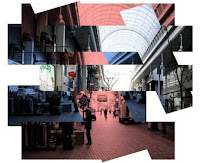By- Anoop Jha
Isn’t it that urban planners, landscape architects and urban designers have heard “neighborhood planning” and stuffs like that so many times, so many literature and theories revolving around these concepts are floating everywhere from college library to, store bookshelves, to free internet, to paid ebook, that one feels little repulsive about these concepts. These concepts and theories are quoted in every urban design, landscape and planning lecture and workshop, seminar, government development and area planning proposal and have been repeated so many times, so many standard templates for neighborhood street sections, hardscape details, footpath design, street furniture etc. are available that it no more sounds exciting that someone is planning or designing neighborhood.








It all began few decades ago when people started getting aware of their surrounding environment , became conscious of their rights of healthy urban living and better neighborhood as a citizen, then planners and designers came forward with a better neighborhood concepts, which has been explored for decades now. They need to come out of this hangover or inertia of decades old new urbanism, it’s time for a new refreshing burst of creativity, radically refreshing approach to define emerging livable cities, not just taking individual pockets of city which we call neighborhood and planning and designing them up to the side curb detail but it’s time to perceive a city in totality and not just dealing with individual pockets.
Its time of revolutionary urban thinking which is made possible due to emerging near impossible technologies, amazing breakthroughs either already achieved or likely to happen very soon, Its time when definition of work, living , Landuse, commuting, communication all are merging together with boundaries fading, in this dawn of new era how relevant are the decades old planning theories and design philosophies? It’s time to Pause, think and provide a new solution for future urbanism.



